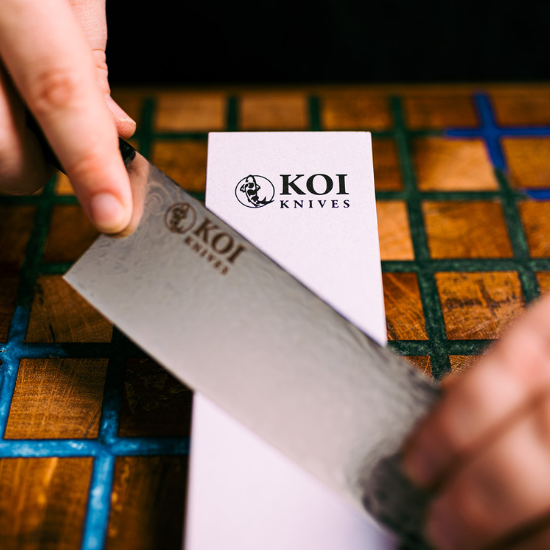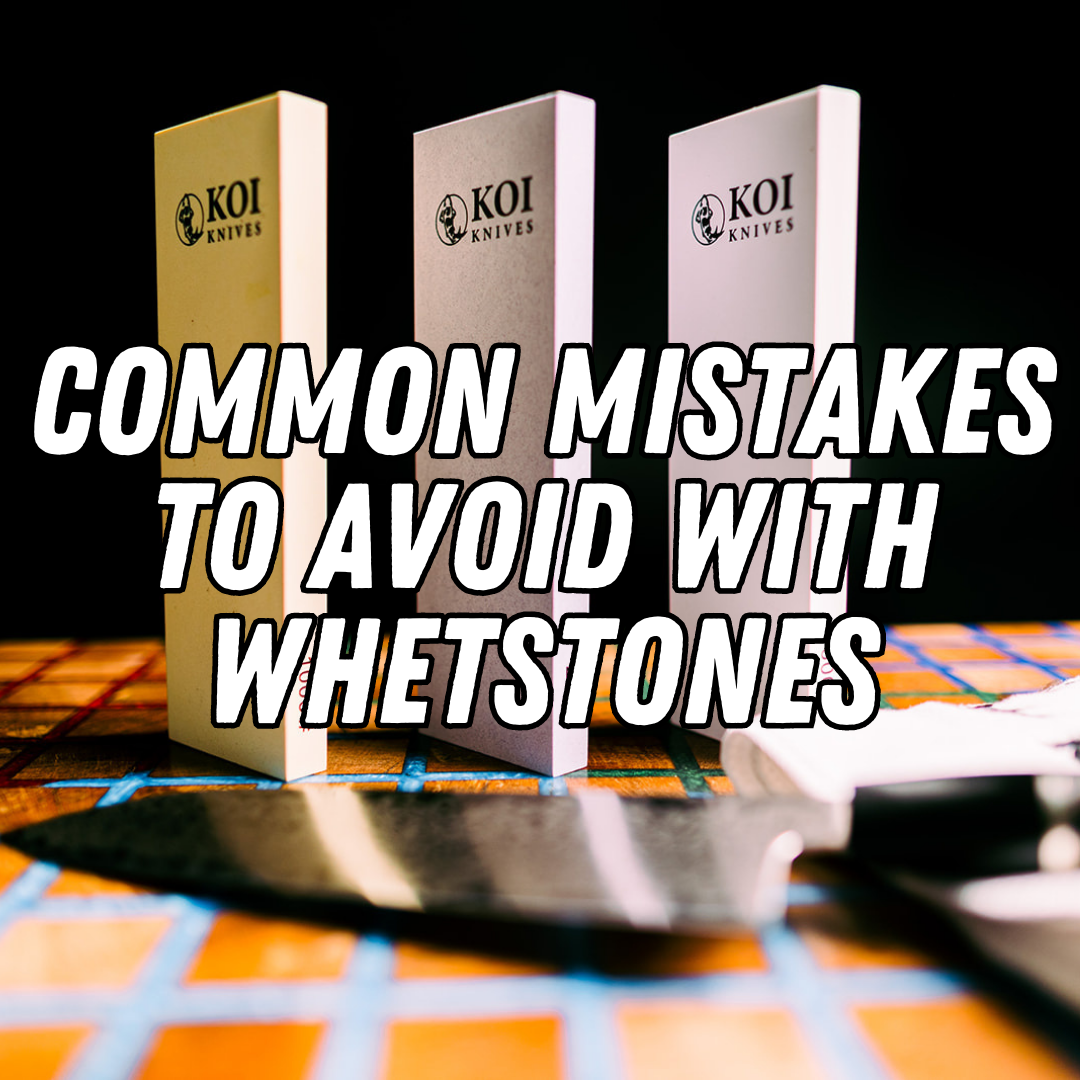'A knife is a knife' to many folks. When they need to cut anything, they pick up the first knife they come across and start chopping away. Most individuals are unaware when to sharpen their knives or even if their blades require a microbevel.
A knife or any tool's edge that has been sharpened contains a microbevel. Not all circumstances necessitate the use of a microbevel, though. It all depends on the use of the blade and its design. For instance, many single-bevel knives do not contain a microbevel. Instead the primary bevel acts as the edge.
Keep reading this article for ideas and ways to help you hack your path to the top of your business if you are serious about knowing more about knives, their microbevels and what they mean for your blades.
A More Extensive Definition of a Microbevel
The phrase microbevel may sound scary, but if you understand what it means, you will have better success maintaining your knives and other edged equipment.
The word "microbevel" refers to the process used to create a secondary bevel on a knife blade or any object with a sharpened edge. To put it even simpler, its your knives' cutting edge.
It is the process of sharpening the region below the primary bevel. A microbevel affects the blade's sharpness and, safeguards and preserves the edge's toughness and straightness, keeping the knife sharper over time.
Sharpening the blade's edge at a larger angle to the plane line of the blade produces a micro bevel. If the primary bevel is at a 10-degree angle to the blade plane, the micro bevel may be finished at a 20-degree slant.
A well-sharpened knife distinguishes perfectly well-cut portions of steak from mangled flesh.
It's not just kitchen blades that benefit from a microbevel. They also help with knives and tools used for various purposes, such as lawn and garden equipment or chisels for wood.
Should Your Blades Have a Microbevel?
The most straightforward approach to determining whether a microbevel should be used on your blades and equipment is to consider your needs and specific circumstances.
The use of a knife or other sharp tool has several applications. A dependable and robust blade is essential in the kitchen and in activities and tasks that necessitate using sharp instruments and knives to fulfill their duties.
Some edges with a microbevel include knives for hunters, cooking knives, backyard and gardening equipment, pocket knives, shears, machetes, and swords.
When a knife or instrument is used extensively, often, and for extended periods, a wider microbevel comes in handy. Maintaining a good honing on your blade will increase its lifespan and reduce the need for regular sharpening.
Distinction Between Honing and Sharpening
People may become very serious about the many types, styles, and methods of sharpening their knives and edged equipment. Some would even argue that sharpening a blade too frequently is blasphemous.
A blade is sharpened to establish the bevel; this process involves grinding the metal to produce a new edge or microbevel. There are a lot of myths about when and how to sharpen a blade's edge.
Sharpening can only be achieved on whetstones or diamond stones. Often people confuse honing rods as knife sharpeners; instead think of them as knife maintainers. Where whetstones will create a fresh edge on your knife, honing rods instead correct an edge that has been pushed to one side through multiple uses. Effectively the honing rod is pushing the rolled edge back to the centre, restoring the knife's cutting edge.
Use Impacts on Sharpening Frequency
Some people believe that sharpening your blade after each usage is necessary. This might harm your knife as it becomes worn down and has a shorter lifespan.
How often you ought to sharpen your knife blades is dependent on what you use them for and how frequently you use them. It is advisable to sharpen your blade roughly once a year if you are a casual user. Sharpening your blades often is advisable for those who use knives or other edged tools regularly, but shouldn't exceed once a month.
Another thing that impacts sharpening frequency is blade hardness. This can be a bit of a deep dive so I will keep it fairly simple. If its a Japanese steel knife, you should only need to sharpen once a year, if its a western steel knife (like Victorinox, Wusthof, Messermeister, Baccarat), you would need to sharpen every 6 months.
When to Sharpen a Knife
As previously noted, many individuals sharpen their blades too frequently, compromising the sharpness and power of the blade. The strongest indicator that your blades need to be sharpened is when honing is no longer effective.
This is because honing occurs between sharpening. In essence, honing produces a sharp blade that clears the edge by removing any burrs or minor defects.
Honing is easily achieved by applying relatively mild pressure to the blade's beveled edge at a specific angle, based on the blade type. Your blade remains sharp for several applications. A knife may be honed numerous times before needing to be sharpened once more.
If your meat looks like it has been cut with a blunt hacksaw, it's probably time for a sharpening. Honing will be ineffective if the blade's edge has any significant issues, such as jagged edges or flaws from cutting items with tough densities.
How to Microbevel Knife or Tool Edges
Adding a microbevel to the edge of your knife may seem frightening at first, but after you've mastered the process, you'll wonder why you were so scared.
Step 1: Before adding a microbevel to your blade's edge, ensure you know the angle required for the exact knife you're working on—Western vs. Japanese. When you know the right angle to employ for your blade type, go to step two. As a guide, most knives have a sharpened angle of 15°.
Step 2: Select the sharpening tool you will use to apply your microbevel. This will be a Japanese whetstone or diamond stones.
Step 3: Using relatively light pressure, slide the blade back and forth across the sharpener at the correct angle. You will eliminate any burrs or tiny flaws that may occur on the edge.
Keeping Your Knives Safe Between Uses - Another technique to reduce the quantity of honing and sharpening is to maintain the sharpness of your blades by carefully storing them between uses, and using the correct chopping board. We suggest a wooden board (not bamboo!) or a hospitality grade PE cutting board.
Conclusion
The difference a microbevel can make is huge. The key takeaway is that if you often use knives or sharp tools, a microbevel is crucial. A microbevel on your blades or sharp equipment might be the distinction between a professional-looking task and a ruined mess.




